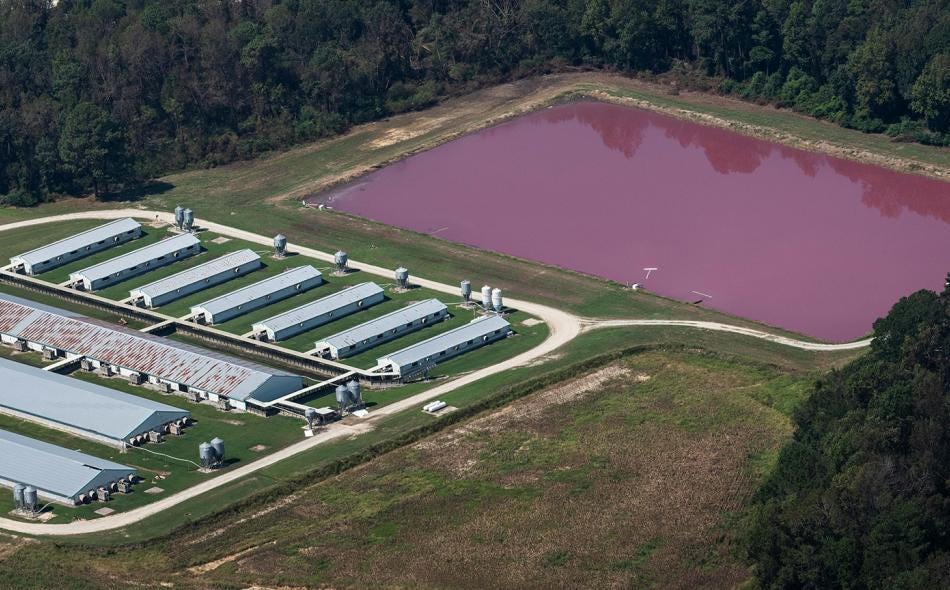The Problem with the New Biden Plan to Curb Methane: It Doesn't Touch Beef
You can't cut methane emissions without cutting beef consumption
The White House announced a plan for reducing methane emissions on November 2nd, promising to curb pollution from a number of industries, including, for once, agriculture. It’s exciting to see a proposed climate policy mention both methane and farming, but the Biden plan tiptoes around meat altogether, failing to address how beef contributes to climate change. By its own EPA figures, beef production is a major methane emitter, yet there’s nothing in the plan that seriously addresses it.
With COP26 well under way, there’s a lot of enthusiasm for climate commitments right now. But commitments don’t mean anything if there isn’t a detailed and transparent plan for how to get there.
According to the EPA’s 2019 figures, animal agriculture is responsible for around 36 percent of all methane emissions in the US. Enteric fermentation — that’s how ruminant animals like cows digest their food — is responsible for 27 percent of that figure.
That’s 27 percent mostly from cow burps. Yes, that’s from beef and dairy farming.
The White House plan makes scant mention of specifics for cutting enteric methane, other than incentivizing “climate-smart agriculture” and other industry solutions like feed additives. Still, I’m guessing these incentives can in fact help reduce enteric methane emissions by a little. Guessing because there aren’t many specifics here. But feed additives definitely have been shown to reduce methane to some degree, at least on the lots where they’re tested.
Keep in mind, however, that even though feed additives can be used to reduce methane emissions from cow burps, it may be much less than the figures touted by media coverage and some university press offices. Basically, cows can’t be fed seaweed additives when they’re grazing on grass, and all cows spend most of their lives grazing, so the actual reductions are likely less than some press reports suggest. Still, it’s something.
Of course, there’s no mention at all of incentives to reduce beef consumption, which is a solution that the evidence overwhelmingly supports for reducing enteric methane.
The other 9 percent in the EPA figure above comes from methane from manure, the massive amounts of manure animals are constantly generating on livestock operations, primarily large dairy farms and hog farming operations.
One of the plan’s few specifics here is an increase of support for AgSTAR, the EPA’s program for on-farm biodigesters. Anaerobic biodigesters work by extracting methane from waste, including animal manure, for use as natural gas to power farm equipment and supply the natural gas pipeline. While digesters do not really reduce manure (though they can reduce volume by taking out the water depending on the digester), they could be used to help improve manure management.
But — and there’s a very big but here — right now most anaerobic digesters are not being used to actually improve the management of manure. Because that kind of improvement would require significant investments of money, time and expertise. Sadly, the potential is there but the technology has been around for decades without actually significantly improving manure management to reduce air and water pollution.
Digesters are incredibly expensive to build. Many if not most farms using them struggle to use or sell the natural gas and struggle to store and sell the manure to nearby farms in a way that’s environmentally sound.
I recently spoke with one Maryland farmer who would be an ideal candidate for using local manure digestate (what the “digested” manure is called) but he had no idea how the process worked or even that that was a possibility. He’s one of the largest corn and soy farmers in a state with a university program dedicated to researching anaerobic digestion but apparently has never been approached by anyone working on this. That makes zero sense if the goal is to actually do better at managing manure.
The other thing to keep in mind about anaerobic digesters is they don’t actually reduce methane emissions. At best, they create a use for the methane, either to power equipment on the farm or by selling it to the natural gas pipeline. The same criticisms of converting our energy use to natural gas also apply to biomethane, in other words.
What’s so damning to me about these biodigesters is just how little accountability there is from industry, both biogas and animal agriculture. Despite the fact that there’s been little evidence of economic or environmental benefit, the Biden administration wants to scale up investment. Anything to avoid holding the meat industry accountable for climate emissions, I guess.
So that was kind of depressing, sorry, but remember that you’re not powerless. In addition to supporting climate action at the highest levels, household actions can make a huge difference too. I love this infographic from Project Drawdown:
PS: The Breakthrough Institute has a new report out called The Clean Cow. Read it here. I kind of hate the title but am looking forward to reading the research!






